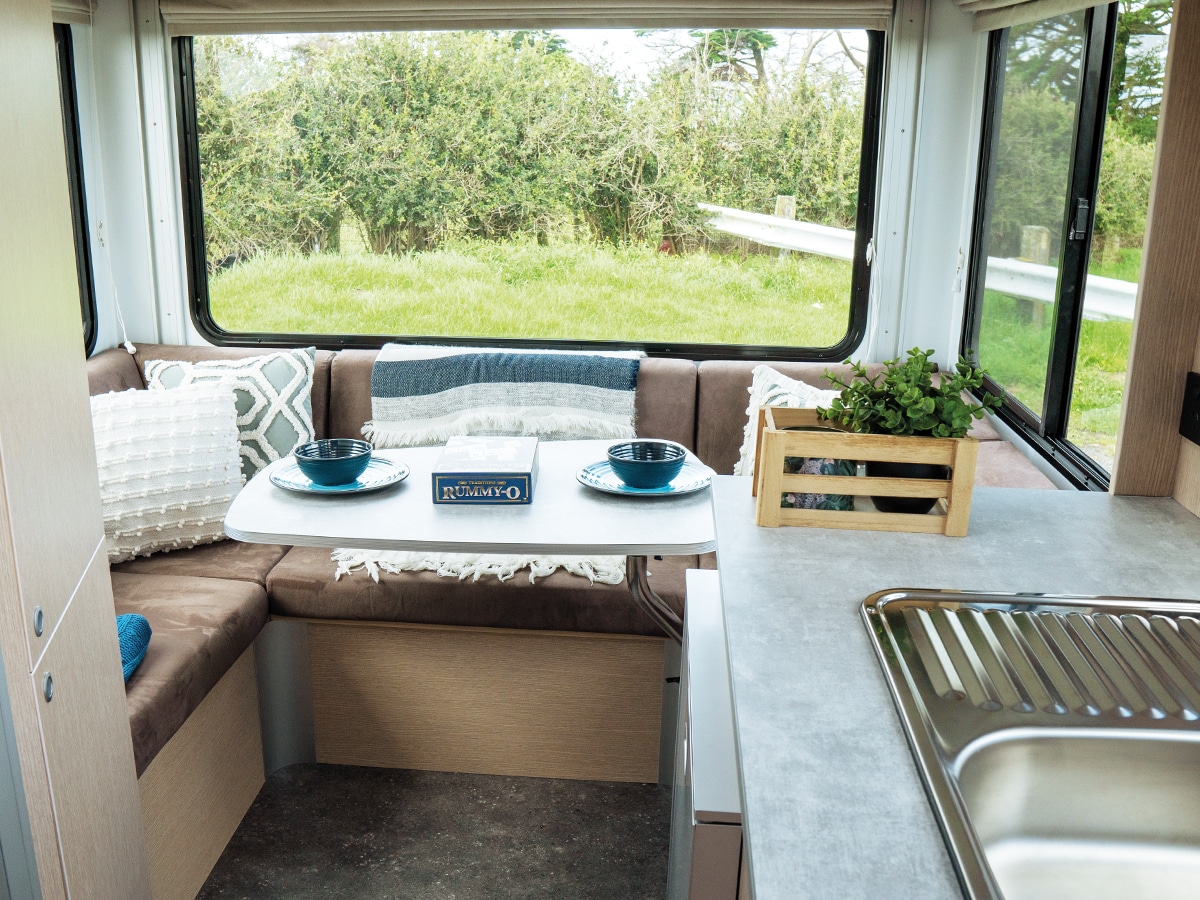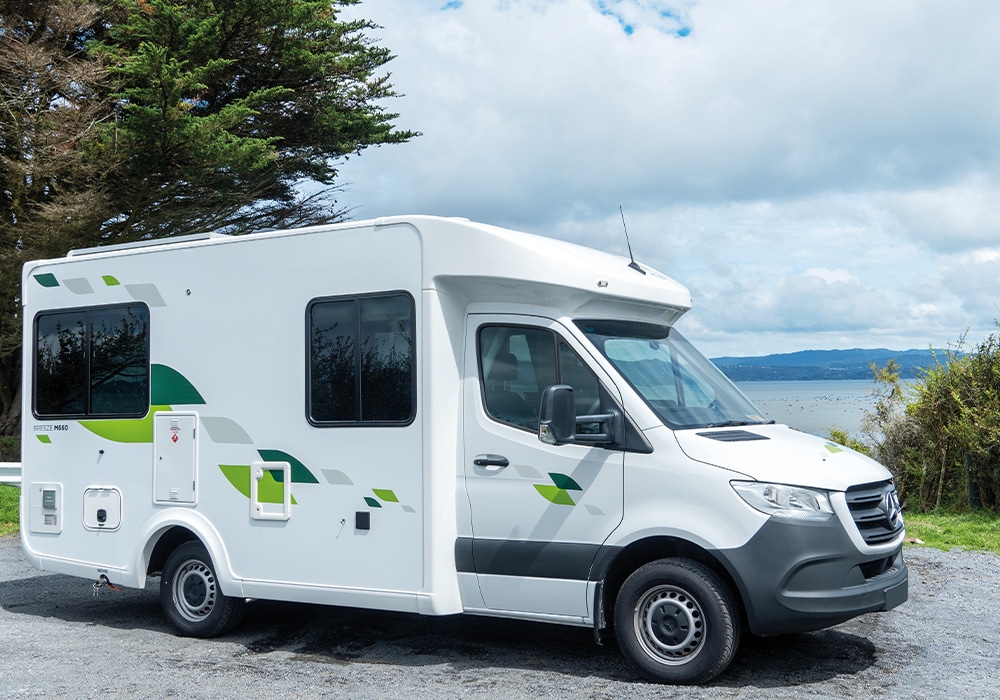Paul Owen took a peek inside the Kea Breeze, a motorhome that’s as easy to drive on the road as it is to enjoy once you’re off it.
One welcome feature of our brave new Covid-adapted world is that the access of motorhome manufacturers to the commercial vans that form the platforms of their products is now restored. That access has reached New Zealand, allowing Hamilton’s Action Manufacturing to ramp up production again, and build Kiwi-made motorhomes designed specifically to New Zealand conditions and preferences. One of the most popular models now flowing out of the factory to the network of RV Super Centres that sell them is this Mercedes Sprinter-based Kea Breeze, a compact four-berth that’s a snip less than seven metres long, making it a doddle to drive and own.
It seems that owning a Breeze is just as easy as the model name suggests. According to RV Super Centre North Island manager, Vicky Joubert, the Breeze is a bit of a magnet for experienced RV owners seeking to downsize. “We get a lot of prospective Breeze buyers who are couples looking to swap their six-berth for something smaller. They’re attracted to the Breeze because they already know that the motorhomes sold by us are robust and well suited to New Zealand roads, and the more compact dimensions make the Breeze easier to drive and park than their present motorhome.”

It’s not just the abbreviated 6.6 metre length that enables the Breeze to be so driver friendly. The comparatively short 3.66m wheelbase tightens the turning circle to an almost car-like 13.4m diameter thanks to the generous steering lock. With the width of the cabin confined to 2.21m, the Breeze can turn into supermarket car parks with less driver effort than that required by the average double-cab ute.
It’s a strong selling point, along with the rear-wheel-drive layout of the powertrain. “Having the rear wheels drive the motorhome makes it less susceptible to getting stuck in a muddy camping site,” says Joubert, “and our Breeze buyers are usually experienced RV owners who have already developed a preference for
rear wheel drive.”
This brand-new Breeze had a window card requesting purchasers to pay $179,990 for it when picked up from the North Island RV Super Centre located near Auckland Airport. Second-hand models that are being retired from the rental fleets operated by Tourism Holdings Limited (also owner of Action Manufacturing and RV Super Centres) list for $149,990 having travelled 150,000km or more. Which gives prospective owners three choices: buy a new Breeze, opt for a well-maintained ex-rental version for $30,000 less, or rent one for a week or two to see whether it fits with your lifestyle.
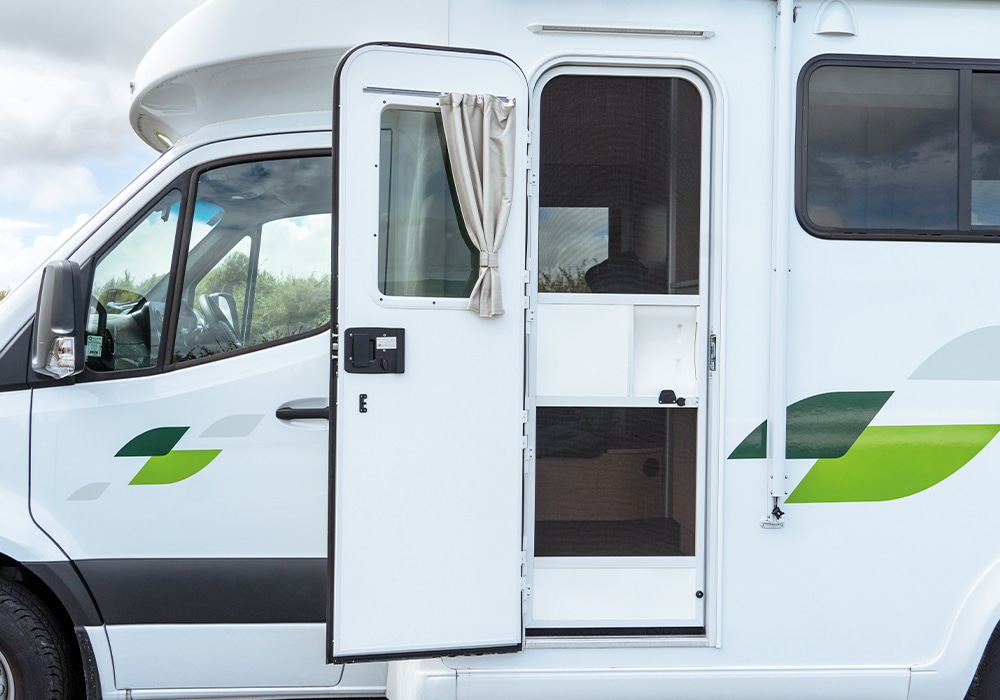
Sprinter 316 platform
Excuse the following numerical soup but this review is about to take a turn towards the mathematical. Decoding the complexities of the Mercedes-Benz Sprinter range requires a little understanding of why certain three-digit number badges are glued to the back of the vans. The first digit refers to the maximum gross weight of the Sprinter, while the following two signify horsepower. Had there been a van body attached to the Mercedes Sprinter that forms the platform for this Kea Breeze, that numerical badge on the rear doors would have read ‘316’.
This means the maximum Gross Vehicle Mass (GVM) in kilograms is a figure starting with a three and confirms that the 2.2L turbo diesel engine under the bonnet develops 160 bhp. Further forensic investigation into Sprinter model identification can also be done by scanning the QR code sticker on the passenger door frame with a mobile phone camera. Doing so on this Kia Breeze revealed the number ‘907’, which means the Sprinter belongs to the third-generation Sprinter van range manufactured between 2018 and 2022.
The Sprinter 316 is a sweet drive. It’s refined, well-managed, and relatively frugal, the highlights being swift access to grunt and exemplary engine/transmission calibration. If you value simplicity, and the only driver aids you require are traction control, anti-lock brakes, stability control, reversing camera, and cruise control, the 316 platform might fit you like a glove.
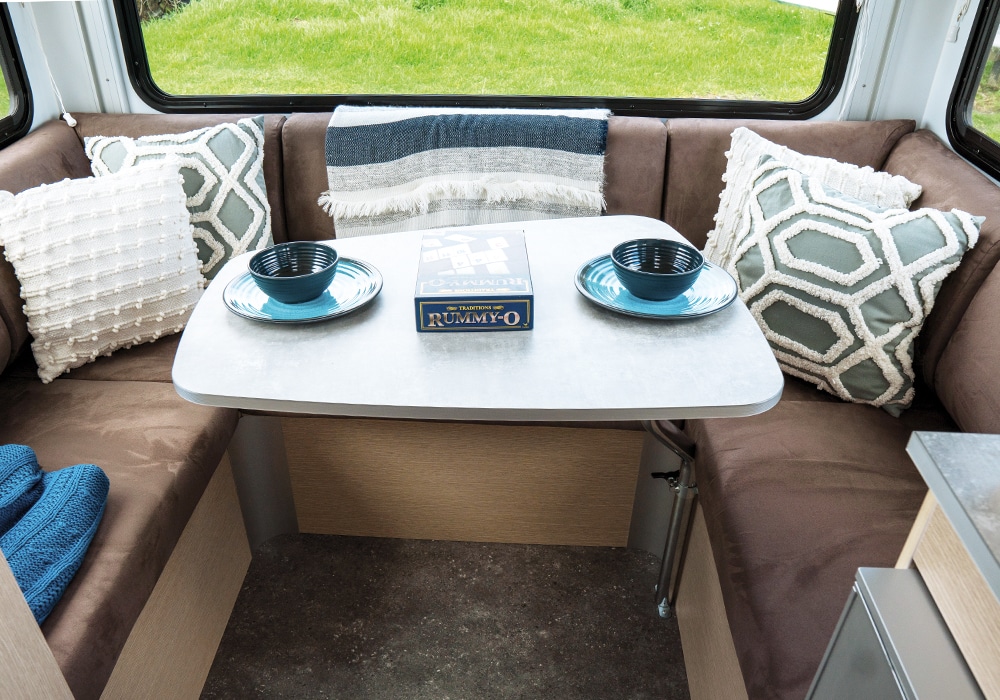
Club Kea
Just like its big sister, the six-berth Platinum, the Breeze features a spacious club-style rear lounge. This is framed by seats on three sides, topped by large sliding glass windows with screens. It’s long been a New Zealand motorhome tradition to park somewhere scenic with the rear lounge oriented to make the most of the views, then sit back, relax, and enjoy the serenity. RV Super Centres’ Kea product line performs this ritual better than anything designed and made offshore, the basic comfort of the lounge being better than most, and the view through those large windows is unparalleled. It helps that they’re made of single panes of proper glass.
Where the lounge of the Breeze differs from the Platinum is in what lies overhead. Where the larger Kea has cupboards, the Breeze has a powered drop-down double bed. This descends and rises with push button convenience, the smooth action showing that some well-considered engineering went into the design of the tracks. When traveling as a couple, that drop-down bed allows the lounge to remain in place at night. Adding two more travellers will require a little rearrangement to convert the lounge into a second double bed. The end result is two double bunks, and there could be some competition for the top one as it offers better head clearance than the one below.
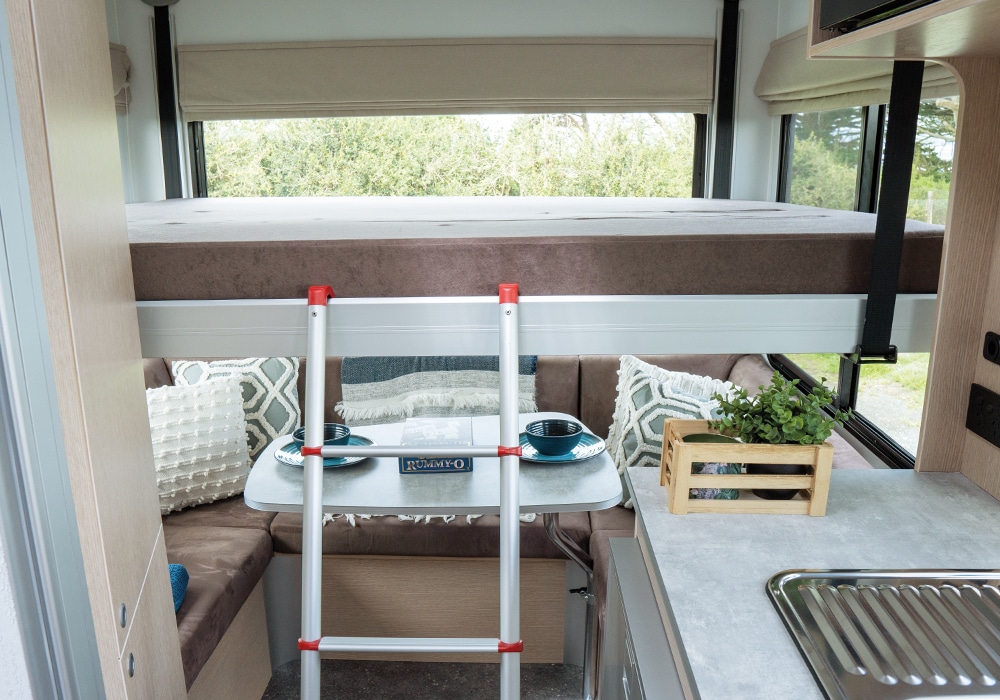
Where the layout of the Breeze becomes segment leading is the provision of two permanent forward facing front sets for passengers three and four. These pews are shaped and upholstered like the seats found in high-end cars and they’re superbly comfortable. They enjoy lots of leg space, and a decent view out the adjacent side window. They’re a big step up from the part-time travel seats found in other motorhomes.

If you think the permanent travel seats are a waste of camping space when parked up as their primary purpose is to seat people when on the move, consider the way the front seats of the Mercedes can swivel around to face them, creating a second lounge up front to match the one out back. Which means that adults can let the kids or grandkids sleep in for a bit out back while enjoying a quiet cuppa together up front.
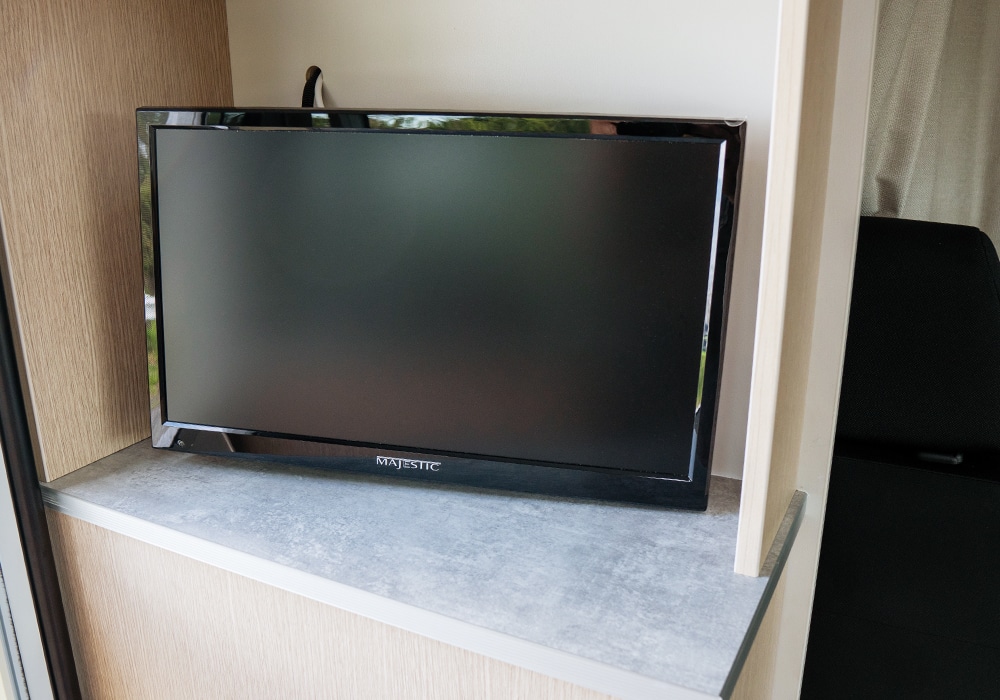
Kea also uses the area as the command centre of the Breeze. The monitors for the 120Ah habitation battery (trickle charged by a 100W solar panel) and the 97L water tanks can be quickly checked by stepping into the alcove ahead of that seating area, and there’s a row of switches for lighting, water pump, awning light outside, water heater, and range hood. Above these controls is the rotary heat control for the Webasto diesel heater that will keep the single-glazed, but otherwise well-insulated, cabin cosy. Below the base of the two travel seats are the easily accessed locations of the power master switch and fuse box.
The cabin of the Breeze can be easily screened for privacy and heat retention at night. A curtain seals off the front cab from the rest of the motorhome, and a series of Roman blinds can be deployed within a minute or two to screen the windows. If it’s a hot summer’s night the two screened skylights can be left open along with the insect-proofed windows. If it’s absolutely sweltering like a Far North night in a La Ninã summer, you can leave the side door hooked open, protected from the mossies by the separate internal screen door.
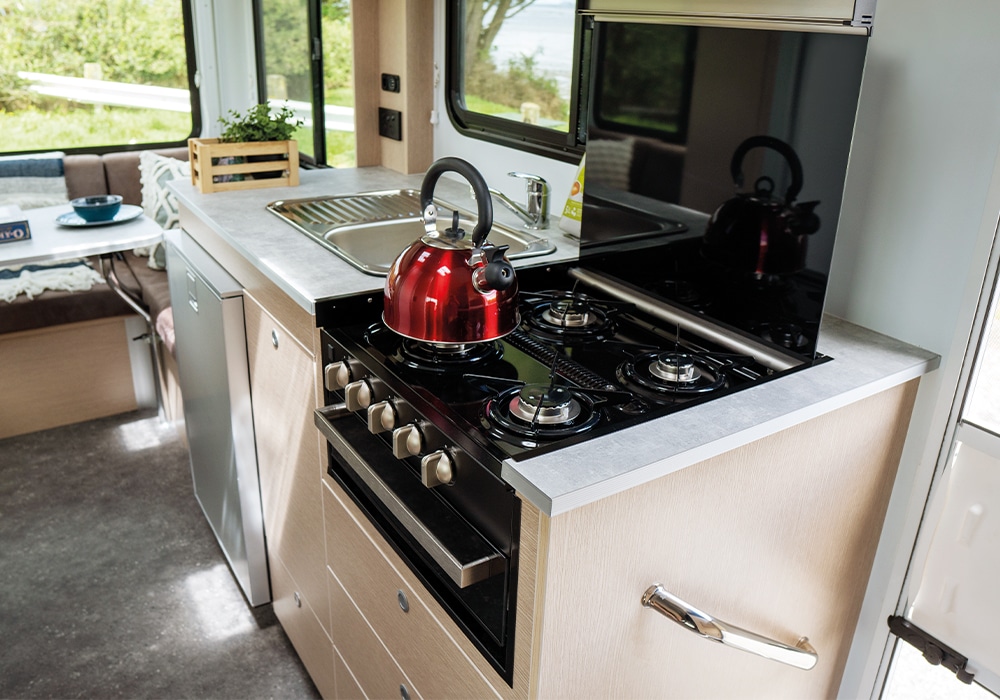
Cooking up and showering down
The kitchen is where you most make compromises due to the more compact dimensions of the cabin in the Breeze. There’s no oven and the bench space has shrunk to a point where the lounge table will be preferred for food preparation. What’s left is a four-burner hob – three fired with gas and one with electricity, and a gas-fired grille. There’s also a microwave and a range hood, so in some ways this is a better equipped kitchen than many motorhomes at this price point. The 130L compressor fridge is also smaller than the motorhome norm, but still larger than the coolers fitted to most campervans.

In true Kea style, the kitchen cabinetry feels solidly designed and ready to survive anything that its time on a rental fleet can chuck at it. The hinges on the overhead cupboards look industrially-strong, and the drawers have cutouts to secure the glassware, plates, bowls and other kitchen paraphernalia stored in them. The latter helps minimise noise levels when on the move inside the Breeze, along with a washroom door that clicks shut on its tight seals and never rattles. There’s room to do a jig in the wet room along with a height-adjustable shower, wash basin, mirror, and Thetford toilet.
Given that the Breeze is one of Kea’s most compact motorhomes, the surprise is that the washroom is so adequately sized and fully useful. Seems that, in this case, the compromises you pay when camping for a more compact motorhome that is an absolute breeze to drive and maneuver are minor ones.
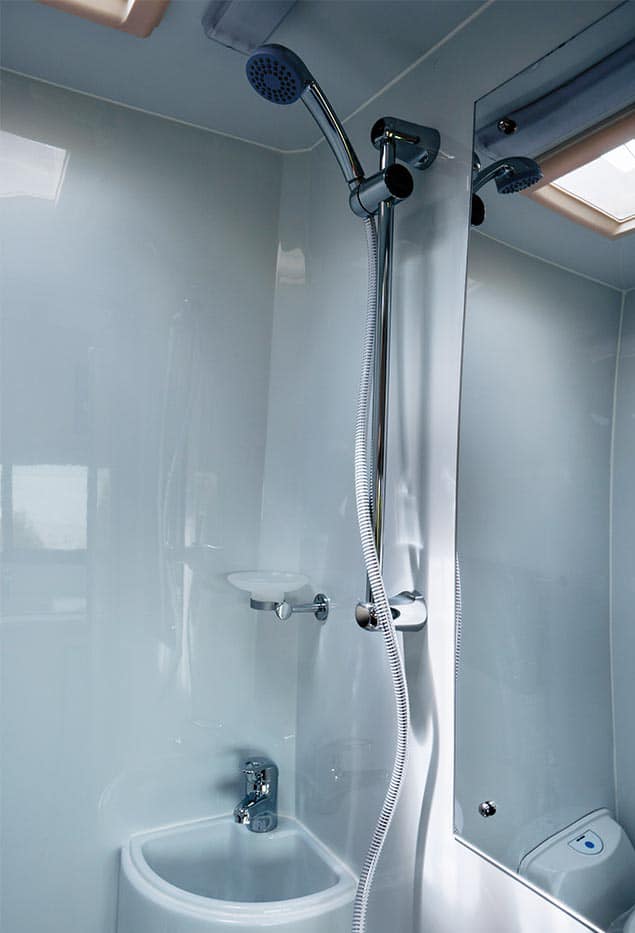
For more information, visit https://www.rvsupercentre.co.nz/
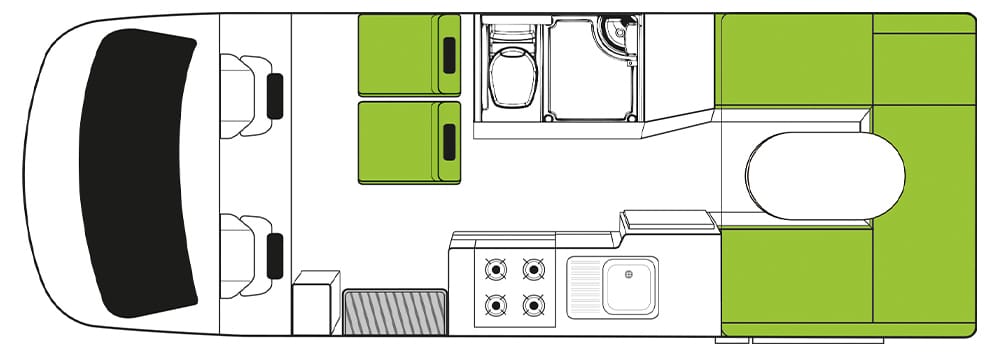
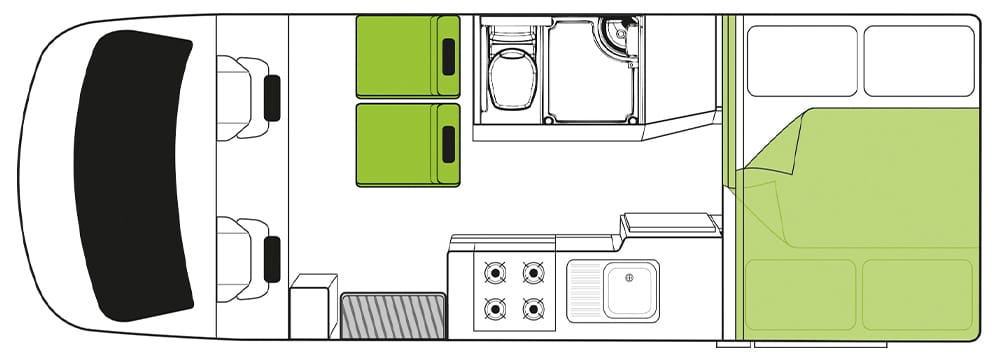
| SPECIFICATIONS | |
|---|---|
| MAKE & MODEL: | Kea Breeze M660 |
| CHASSIS: | Mercedes-Benz Sprinter 316 cab/chassis, rear wheel drive |
| ENGINE: | 2.2 litre inline four turbo-diesel, 160bhp/360Nm |
| GEARBOX: | Seven-speed automatic |
| BERTHS: | 4 |
| LENGTH/WIDTH/HEIGHT: | 6600mm/2200mm/3000mm |
| FRESH/GREY WATER: | Fresh 97L/Grey 97L |
| GVM | 3550kg |
| PRICE: | $179,990 |

